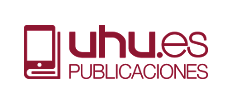GENERATION OF A TOURISM PRODUCT: JEWISH HERITAGE TOURISM IN SPAIN
Keywords:
Abstract
This paper aims to study the supply side of an emerging new tourism attraction. Specifically, the research focuses on the transformation of Jewish heritage to a unique tourism product. Actual objectives are to assess the physical elements composing the Jewish heritage product and to examine their diversity in a sample of twenty Spanish towns and cities, members of Red de Juderias de España organization. Affiliation with a central actor raised the question to what extent different localities are affected by the central guidelines so as to generate a homogeneous product of a repetitive nature. A survey of all artifacts related to Jewish heritage tourism in these cities provided the data for the assessment. The results shed light on the process of converting abstract heritage to a tangible tourism product. The Jewish heritage product embraces a set of specific elements listed in descending order of their appearance: Jewish quarter, Jewish museum, a synagogue, a local Jewish persona, other artifacts, square or garden named after a Jewish persona, and Jewish cemetery. Not all places have all elements and elements of the same type are not necessarily at the same level of development. Analysis of the diversity of the product among the towns reveals a tendency towards homogeneity in the visual appearance of the Jewish quarters and the displays exhibited in Jewish museums. Nonetheless, certain elements such as synagogues and their story, local Jewish personas, and other minor artifacts tend to portray greater heterogeneity. In addition, the differences found in the productmix among cities help to increase their diversity. It is recommended to exercise a greater care in preserving differences among cities especially those located in the same geographical cluster. In the way of analogy these findings seem to equally apply to other niche tourism products such as wine tourism, rural tourism, or other religions' tourism of non-monumental nature.







